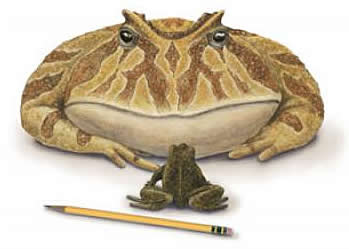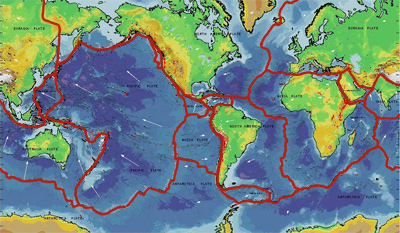
Courtesy of SUNY-Stony Brook
Giant Fossil Frog Found in Madagascar
News story originally written on February 18, 2008
If you went looking for frogs today on the island of Madagascar, the largest one you could find would be just over four inches long. But if you went looking for frogs more than 65 million years ago, you could have found some giants.
A team of researchers discovered the fossils of what may be the largest frog ever to exist on planet Earth. The frog, named Beelzebufo, or “devil frog,” was 16-inch across and 10-pounds. It hopped around Madagascar at the end of the Mesozoic Era - 65 to 70 million years ago.
Paleontologist David Krause discovered the first bones of the giant frog in Madagascar in 1993. Since then, Krause and his team have gathered some 75 fossil frog fragments, enough to reconstruct the frog's skeleton, including nearly the entire skull.
According to the fossil skeleton, this frog was a powerful animal with a protective shield, an extremely wide mouth and powerful jaws. These traits made Beelzebufo able to kill lizards and other small vertebrates, perhaps even baby dinosaurs. This frog was a voracious predator.
Beelzebufo is in the group of frogs that have huge mouths – mouths large enough to be worthy of the group’s nickname: 'pac-man' frogs.
Fossil frog experts Susan Evans and Marc Jones discovered that Beelzebufo is most likely related to frogs living today in South America.
“We're asking ourselves, 'What's a 'South American' frog doing half-way around the world, in Madagascar?'" said David Krause.
This is the first time a fossil group has been found in Madagascar, an island off Africa's southeast coast, with living relatives in South America, over 7,000 miles (11,000 km) away. Other fossils have been found on both Madagascar to South America including closely related fossils of plant-eating and meat-eating dinosaurs, crocodiles, and mammals.
All this may be evidence from the time when, because of plate tectonics, Africa, South America, and Antarctica were connected forming a supercontinent.














